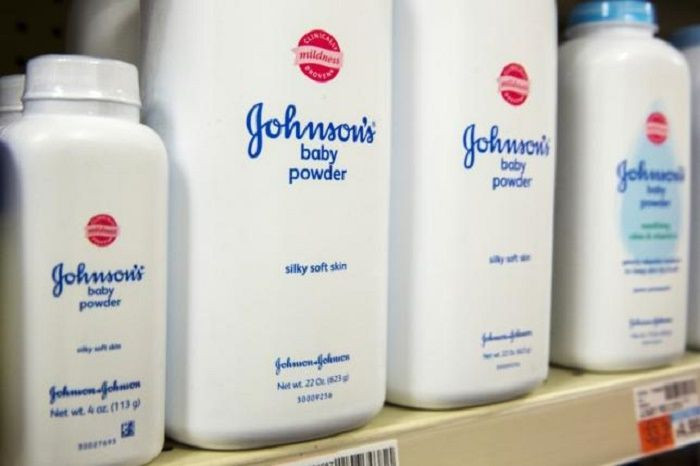Talcum Powder May Cause Ovarian Cancer If Regularly Applied To Genitals And Sanitary Napkins

Earlier this week, a St. Louis jury ordered Johnson & Johnson to pay $72 million in damages to the family of a now-deceased Alabama woman who claimed the company's talcum powder and other products caused her ovarian cancer. While the company has maintained their products are safe, a new study published in the journal Epidemiology suggests otherwise.
Talcum powder is widely used in cosmetic products, such as baby powder and adult body and facial powders. The powder — made from talc, a mineral that consists of the elements magnesium, silicon, and oxygen — is used to absorb moisture and cut down on friction. Some talc contains asbestos, a substance that has been linked to cancers in and around the lungs when inhaled, according to the American Cancer Society.
Researchers from the Brigham and Women's Hospital in Boston cited talcum powder has previously been linked to ovarian cancer, namely in cases where the powder has been applied to the genital region. In order to determine if genital talc is a potential carcinogen, or substance capable of causing cancer, researchers recruited 2,041 women with ovarian cancer and 2,100 without the illness and asked them about their talcum powder use. They found that applying the product to genitals, underwear, and sanitary napkins increased the risk of developing ovarian cancer risk by a third.
That said, these risks depend on many different factors, including participant's weight, menopausal hormone use, and smoking habits.
"This is an easily modified risk factor," Dr. Daniel Cramer, lead author of the study, told Reuters Health. "Talc is a good drying agent, but women should know that if it's used repeatedly, it can get into the vagina and into their upper genital tract. And I think if they knew that, they wouldn’t use it."
Cramer, who first reported a link between talcum powder use on the genitals and ovarian cancer in 1982, has reportedly called for companies to put warning labels on talcum powder in the past. Clearly, those cries have fallen on deaf ears.
Ovarian cancer is the eighth most common cancer and the fifth leading cause of cancer death in the U.S., with 20,000 women being diagnosed with the illness each year, according to the Centers for Disease Control and Prevention. It accounts for 3 percent of all cancers in women.
Despite these new findings, some still aren’t convinced talcum powder is linked to ovarian cancer because "this new study was not of the most rigorous possible design," Dr. Nicolas Wentzensen, head of the clinical epidemiology unit for the National Cancer Institute, told Reuters. Wentzensen was not involved in the study.
He concluded: "While this recent analysis provides additional evidence supporting an association of talc and ovarian cancer, it will be important to test the methods used in this analysis in other data to see if the findings are confirmed."
Source: Cramer D, Vitonis A, Terry K, Welch W, Titus L. The Association Between Talc Use and Ovarian Cancer: A Retrospective Case-Control Study in Two U.S. States. Epidemiology. 2015.
Published by Medicaldaily.com



























